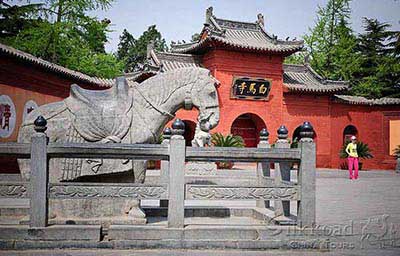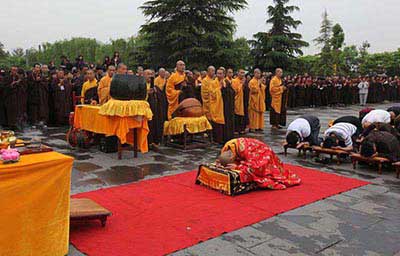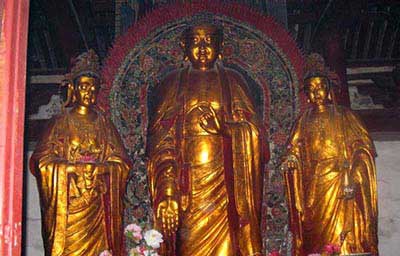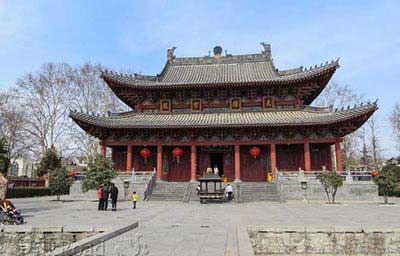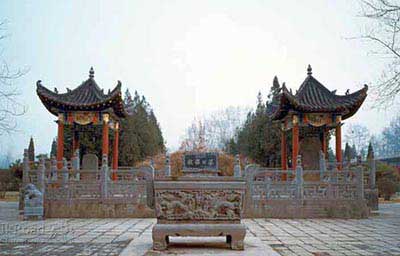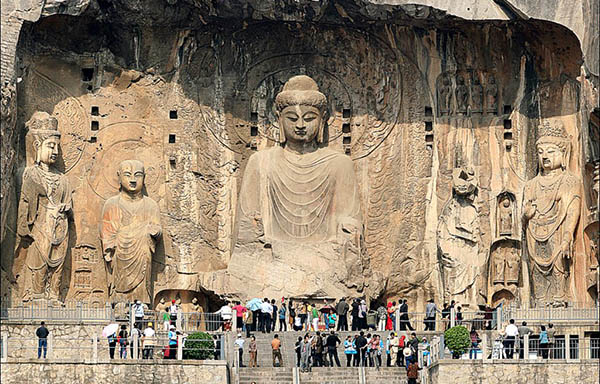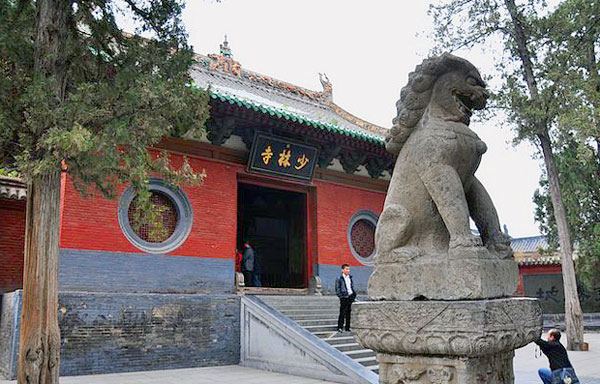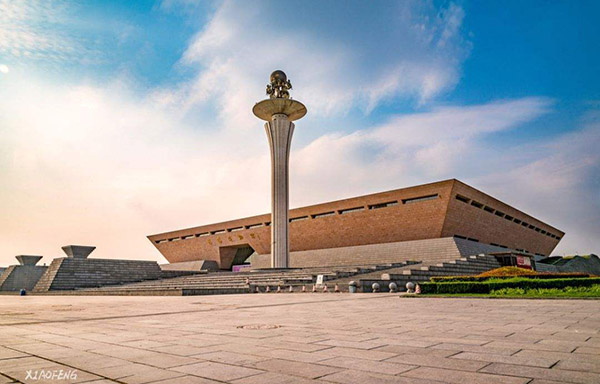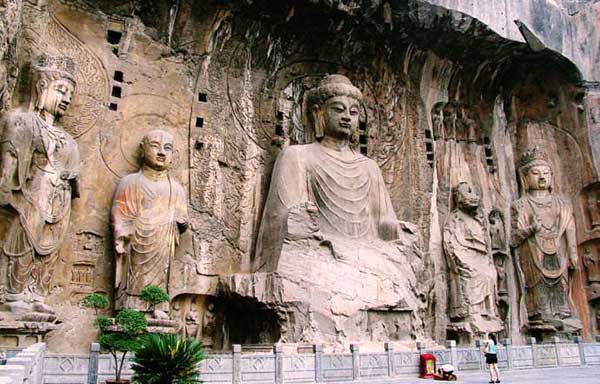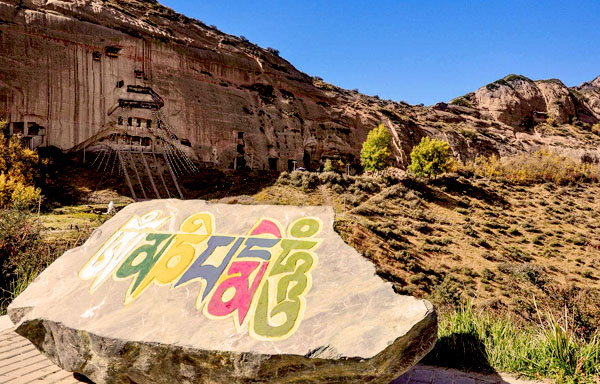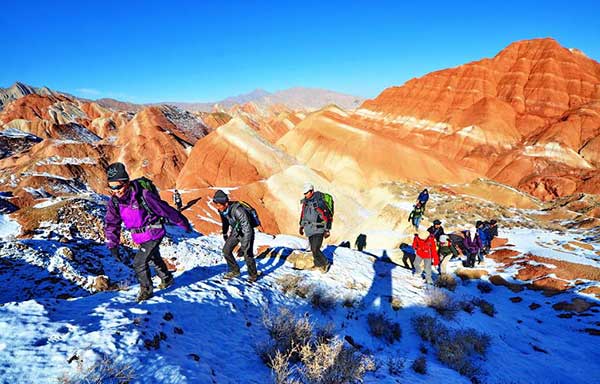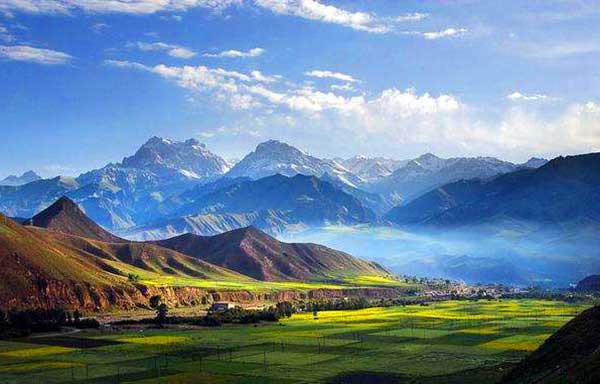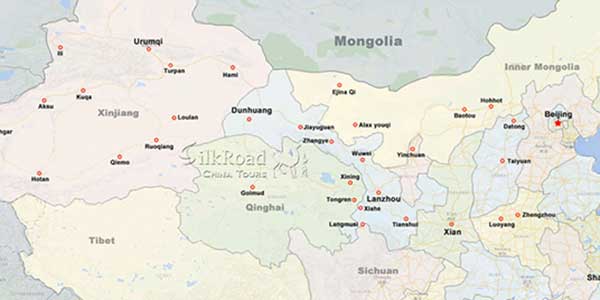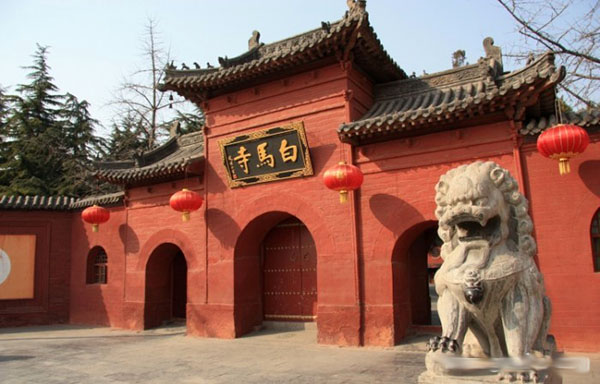 There are many temples named as “white horse temple ” in China, but the “white horse temple ” in Luoyang is the most famous one. Which is the first government-established temple since the Buddhism introduced to China. It’s located 12 km east of Luoyang city , founded in 68 A.D. in the Eastern Han dynasty with history more than 1900 years and known as “the first Chinese temple” and “the birth place of Chinese Buddhism”. The existing temple site was built in Yuan, Ming and Qing dynasties, which preserved a lot of image of Buddha, arhat and Heavenly Kings.
There are many temples named as “white horse temple ” in China, but the “white horse temple ” in Luoyang is the most famous one. Which is the first government-established temple since the Buddhism introduced to China. It’s located 12 km east of Luoyang city , founded in 68 A.D. in the Eastern Han dynasty with history more than 1900 years and known as “the first Chinese temple” and “the birth place of Chinese Buddhism”. The existing temple site was built in Yuan, Ming and Qing dynasties, which preserved a lot of image of Buddha, arhat and Heavenly Kings.
At present, the White Horse Temple is designated one of the national cultural relics protection units and national 4A certificate scenic spots. The monk priests of the temple have frequently visited other Asian countries and greeted friends from afar, conducting friendly exchanges to disseminate Buddhist culture.
The history of white horse temple
According to historical records, one night in the Eastern Han dynasty (AD 67), Emperor Liuzhuang had a dream of a fairy with golden light surrounding the body, flying softly and landed in front of Royal palace. The next morning, he told his dream to the ministers and asked who knows anything about the fairy. One of the minister told Emperor Liuzhuang: I heard that in the west world (India) there was enlightenment god, known as the Buddha, who can fly and whose body emits light, Just like what you’ve dreamed . Emperor Liuzhuang was very happy. He sent a delegation of his men to study Buddhism in the western world. After three years, two eminent Indian monks, She Moteng and Zhu Falan, came back with the delegation. They brought with them a white horse carrying Buddhist sutras and Buddhist figures on its back. This was the first time that Buddhism appeared in China.
To express his thanks to the two monks and their white horse, the emperor ordered the building of a monastery which he named the White Horse Temple during the following year. During this time, the two monks were busy translating sutras in the temple until they completed the Chinese sutra 'Forty-two Chapter Sutra', which attracted many monks and meant that the temple became a centre for Buddhist activity in China. It is for this reason that the temple is honored as the 'Founder's Home' and the 'Cradle of Buddhism in China'.
Tianwang Hall (Heavenly King Hall)
Standing behind the temple gate, Tianwang Hall is the first hall of this temple. In it, the Maitreya Buddha was enshrined with four Heavenly Kings on both sides. The four Heavenly Kings hold respectively a pipa, a sward, a snake and an umbrella in their hand, which symbolizing favorable weather for crops and a prosperous and peaceful country for the people. Behind the Maitreya Buddha is Weituo, the protector of the Buddhist doctrine.
Great Buddha Hall
Great Buddha Hall is the second hall of the temple. It is the place where the grand Buddhist ceremonies are held. The existent hall dates from the Ming Dynasty (1368 - 1644). In its center sits erect a statue of Sakyamuni which is closely flanked by two Bodhisattvas Wenshu and Puxian, and his two disciples Ananda and Jiaye. Behind stand the statue of Avalokitesvara. In the southeast of the hall, a huge bell is hung from the beam. It was said that when the bell is struck, the toll could be heard far away. More interesting is that once the bell is tolling, the one in Bell Tower in Luoyang Old Town will response it quickly due to the sympathetic vibration. "Horse Temple Bell", one of the eight scenes in Luoyang city was named from it.
Daxiong Hall (Great Hero Treasure Hall)
Originally built in the Yuan Dynasty (1271- 1368) and rebuilt in the Ming and Qing dynasties, Daxiong Hall was the most magnificent in scale and most splendid in view. The hall houses three Buddhas. Sakyamuni is sitting in the center with Medicine Buddha who from the Eastern Pure Land of Azure Radiance on the left and Amitabha Buddha, the teacher of the Western Pure Land on the right. The hall also house eighteen Arhats. They are vivid in modeling and unique in gesture and are treasures in Buddhist arts of the Yuan Dynasty.
Qingliang Terrace
The fourth hall is Jieyin Hall (Receiving and Directing to Paradise Hall). Behind it is a platform named Qingliang Terrace. Rebuilt in the Ming Dynasty, Qingliang Terrace was said to be the place where Emperor Ming of the Han Dynasty read and rest. Later, the two dignitary monks from Indian once lived here and preached Buddhism and translated scripture books until death. After the Eastern Han Dynasty, this terrace was adopted to house the Buddhist sutra.
Qiyun Pagoda (Cloud Reaching Pagoda)
Located about 200 meters southeast of White Horse Temple is Qiyun Tower. It was originally built in the Later Tang Dynasty during the Five Dynasties as a pavilion-like wooden structure. Later, destroyed in a fire, it was rebuilt in 1175 as a 13-story square brick structure with closely arranged eaves. Qiyun Pagoda is 25 meter in height with 13 stories and 7.8 meters on each side at the bottom. Displaying a unique style, the pagoda belongs to the style of cubic shaped, close eaves brick pagoda. The eaves are built with small, exquisite overlapping bricks. Once you clap your hands 20 meters away from the pagoda, the echo reflected from the eaves sounds like frogs croaking. Qiyun Pagoda is also one of the few ancient buildings of the Jin Dynasty (1115 - 1234) in central China.
Besides, White Horse Temple has kept more than 40 upright stone tablets through the ages since the Tang Dynasty. Among them the Notes of Luojing Baima Temple Originating Court handwritten by Zhao Mengfu, a famous calligrapher of the Yuan Dynasty, is the most precious one. Outside of the temple there is two stone horses, all in life-size. These two horses look geniality and tractability. They are the stone-carved horses made in Song Dynasty (960 - 1279), and they are the excellent artwork.
Gallery
Attractions in the area
Related Tours
General Information
Alias: Baimasi
Loc: 12 km from Luoyang
Entrance: 50 RMB
Open Time: 07:30-19:00
Relevant blogs
-
How did the name of Tianshui in Gansu come about?
The name Tianshui is very pleasant to the ear, and it reminds one of that exquisitely beautiful verse, "After getting drunk, one doesn't know if the sky is in
-
The 8th Silk Road Hotel Festival was successfully held i
On December 27th, the "8th Silk Road Hotel Festival" grandly opened at the Yujing International Hotel in Zhangye. This hotel festival gathered industry experts,
-
The Karez Irrigation System in Turpan has been selected
On September 3rd, at the 75th Executive Council Meeting of the International Commission on Irrigation and Drainage held in Sydney, Australia, the 2024 (11th bat
-
What is the connection between "dragons" and "snakes
In traditional Chinese culture, the snake has a dual identity of auspiciousness and danger. Ancient people believed that the snake not only possesses divine cha
-
Endangered Przewalski's Horses Spotted at Dunhuang Yume
<p>In early February, a group of special "visitors"—the Przewalski's horses—appeared at the Dunhuang Yumen Pass scenic area in Gansu Province, a U
-
The Fourth Dunhuang Cultural Tourism Supplier Conference
On the morning of February 18th, the Fourth Dunhuang Cultural Tourism Supplier Conference in Northwest China commenced at the Dunhuang International Convention

